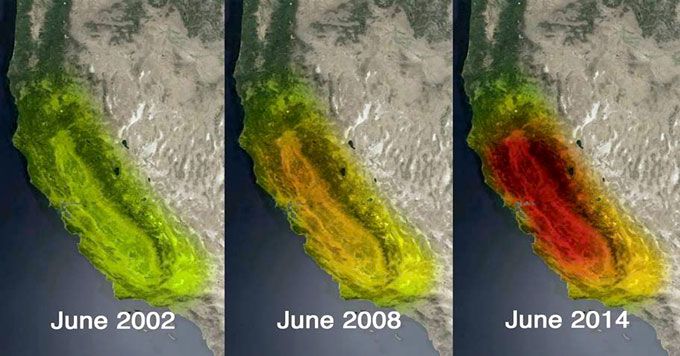California's Drought is Over, but its Groundwater Problem isn't
Published on by Water Network Research, Official research team of The Water Network in Academic
California’s historic drought has come to an end. But the effects still linger.
Claudia Faunt, a hydrologist with the U.S. Geological Survey, talks about the drought ending but also the remaining effects of the underground aquifers.

Satellite observations of declining water storage in California as seen by NASA’s Gravity Recovery and Climate Experiment satellites.
Faunt: “This past year has been so wet that the snowpack and the surface water reservoirs are all at or well above averages. However, the groundwater system hasn’t quite recovered from the drought and the overuse that’s been chronic for the last number of years.”
Claudia Faunt says California’s groundwater has long been over-drawn, especially in the central valley. It’s used for agriculture, city water supplies, and to sustain streams and wetlands.
Faunt: “The amount of water being pulled out is more than the amount of water going in. And this is accentuated during droughts when there isn’t enough surface water or snowpack. If we want to recover, we need to be putting more water into the system than we are taking out.”
Given the demand for water, that’s no small task, especially because climate change will likely make droughts more common. But finding a better way to manage the water will be critical:
Faunt: “The groundwater system is an invisible but very vital resource that we depend on, and particularly depend on during times of drought.”
Source: Yale Climate Connections
Media
Taxonomy
- Groundwater
- Aquifer
- Drought
- Aquifer Recharge
- Groundwater Recharge
- Aquifer Recharge
- Groundwater Assessment
- Groundwater Quality & Quantity